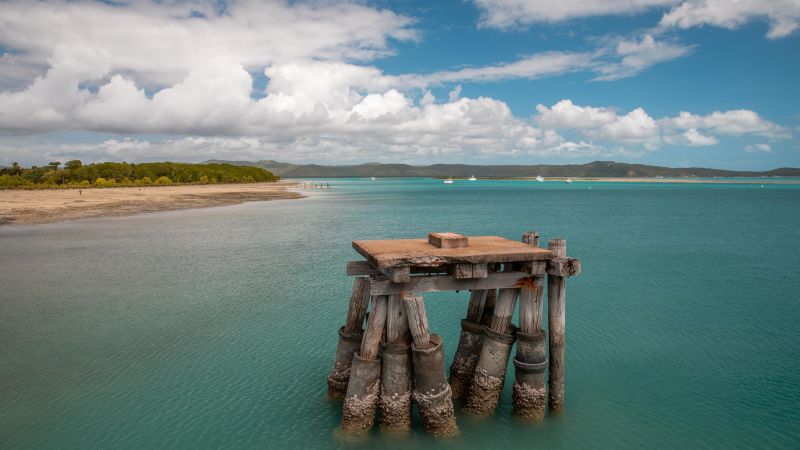At the far northern tip of Australia is one of the country’s least-visited and least-understood regions.
But that’s about to change, thanks to local Indigenous entrepreneurs like Fraser Nai.
The Torres Strait comprises 247 islands at the northernmost tip of Queensland, near Papua New Guinea. The Torres Strait Islanders who live there are of Aboriginal, Melanesian and Australian background. Arguably the most famous Torres Strait Islander in the west is the NBA’s Patty Mills, who plays for the Brooklyn Nets.
Many of the islands are volcanic, and, set amid brilliant turquoise water, they create an incredible landscape. And it’s one that now has become a bit easier for non-Torres Strait Islanders to visit and experience thanks to a first-of-its-kind day trip from Cairns, the Queensland city best known for being the gateway to the Great Barrier Reef.
“We’re not in the tourism business, we are in the people business. We just happen to serve tourism experiences,” says Nai, the co-founder of Straits Experiences, a locally led and operated business that brings people to the Torres Strait.
A Torres Strait Islander, his people are the owners and stewards of Masig Island.
As a longtime member of local government in the area, he has witnessed how giving people access to more opportunities – especially in rural areas with fewer jobs and less access to different industries – can be transformative.
But he has also seen the way that Cairns and the Barrier Reef have swelled with tourists, which can lead to erosion and crowding, so he’s trying to walk a middle path.
Opening up tourism in the more rural parts of the Torres Strait will create more opportunities for young people, but years of watching how other destinations have handled the industry means they can make smart decisions for long-term sustainability.
They’re also investing in one of the region’s greatest assets – its people.
“We still operate with our values,” he explains. “We work with first and foremost our community, our elders and our leadership, because this is about them.”
Torres Strait Islanders’ history has been marked by struggle.
White European settlers to Australia began engaging in violent, bloody conflict – known as the “Frontier Wars” – with local Indigenous communities soon after arriving on the continent.
Aboriginal and Torres Island Strait people had their children forcibly taken from them and sent to live in residential schools or with non-Indigenous families. The government of the time claimed their removal was in the best interests of the children, but it created generational trauma for survivors and their families.
First Nations people were banned from using their native languages and often moved from their homes onto reservations.
Today, only about 3% of Australians are Indigenous.
Every May 26 since 1998, Australia observes “Sorry Day” to acknowledge these atrocities and try to make amends.
Through Straits Experiences’ one-day “A Strait Day” tour, visitors get what Nai dubs “an injection” of local culture and history.
It’s a long day, but a satisfying one. Guests depart on a charter flight from Cairns at 6:40 a.m. and arrive on Thursday Island – Waiben in the local language – the primary island of the Torres Strait.
A guide accompanies them on the flight to talk about the Torres Islands’ land and people, which includes details about the landscape and information about present-day Torres Strait Islanders and some of the economic hardships they face.
Upon arriving on Thursday Island, the visitors – usually there are about 30 people in total – experience a full day of activities, including a scenic tour of Ngurapai (Horn Island), a visit to Green Hill Fort (dating from the late 1800s, it was intended as a defense against a hypothetical Russian invasion), an exploration of World War II-era military sites, traditional music and dance performances from a local group called the Island Stars and an island-style buffet lunch.
“This is the only part of the whole of the country of Australia where you will see both Indigenous races on their own country,” Nai explains.
Even for many Australians, the Torres Strait remains a place they haven’t visited and don’t know much about.
Nai says that many interested tourists he meets with mix up the Torres Strait Islands with the Tiwi Islands, which is an Aboriginal area in the Northern Territory. Interactions like those just underline his point further – human relationships are key to moving forward.
“We want to land in a place where people are more understanding, more empathetic, and we can have a great conversation as humans and be friends,” he says. “That’s our real mission.”
Read the full article here


